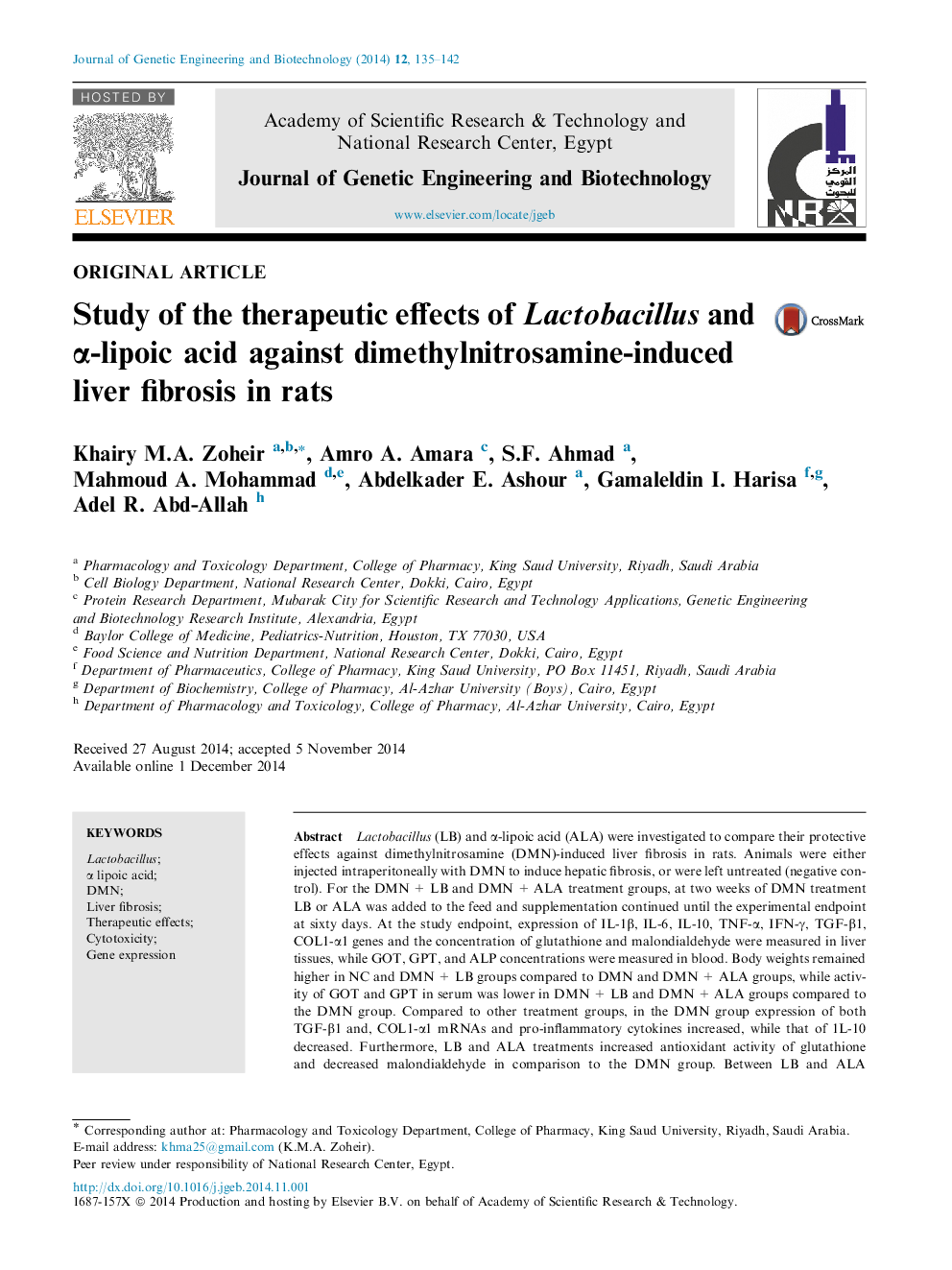| Article ID | Journal | Published Year | Pages | File Type |
|---|---|---|---|---|
| 2087897 | Journal of Genetic Engineering and Biotechnology | 2014 | 8 Pages |
Lactobacillus (LB) and α-lipoic acid (ALA) were investigated to compare their protective effects against dimethylnitrosamine (DMN)-induced liver fibrosis in rats. Animals were either injected intraperitoneally with DMN to induce hepatic fibrosis, or were left untreated (negative control). For the DMN + LB and DMN + ALA treatment groups, at two weeks of DMN treatment LB or ALA was added to the feed and supplementation continued until the experimental endpoint at sixty days. At the study endpoint, expression of IL-1β, IL-6, IL-10, TNF-α, IFN-γ, TGF-β1, COL1-α1 genes and the concentration of glutathione and malondialdehyde were measured in liver tissues, while GOT, GPT, and ALP concentrations were measured in blood. Body weights remained higher in NC and DMN + LB groups compared to DMN and DMN + ALA groups, while activity of GOT and GPT in serum was lower in DMN + LB and DMN + ALA groups compared to the DMN group. Compared to other treatment groups, in the DMN group expression of both TGF-β1 and, COL1-α1 mRNAs and pro-inflammatory cytokines increased, while that of 1L-10 decreased. Furthermore, LB and ALA treatments increased antioxidant activity of glutathione and decreased malondialdehyde in comparison to the DMN group. Between LB and ALA treatments, glutathione concentration was higher in the DMN + LB group, while malondialdehyde was lower. Our results indicate that both LB and ALA exert hepatoprotective effects against DMN-induced liver fibrosis. Their beneficial effects may be partly associated with down-regulation of both TGF-β1 and COL1-α1 signaling, which may be accounted for reduction of increased oxidative stress and TNF-α production.
